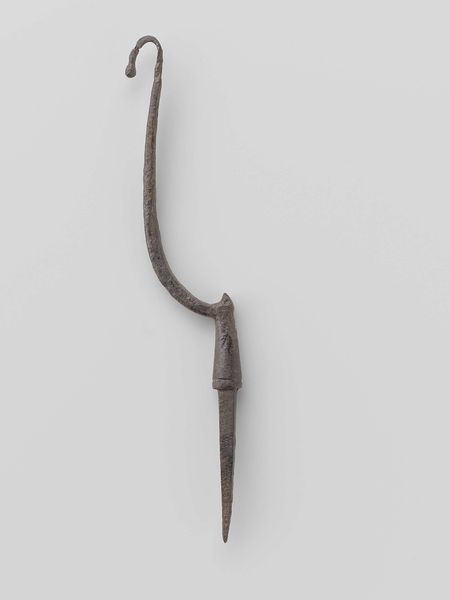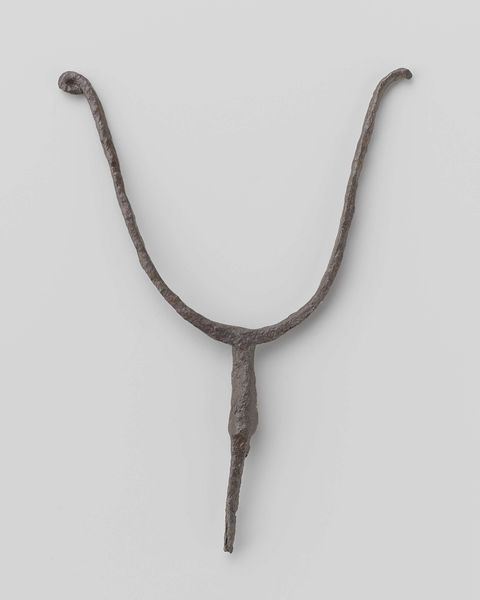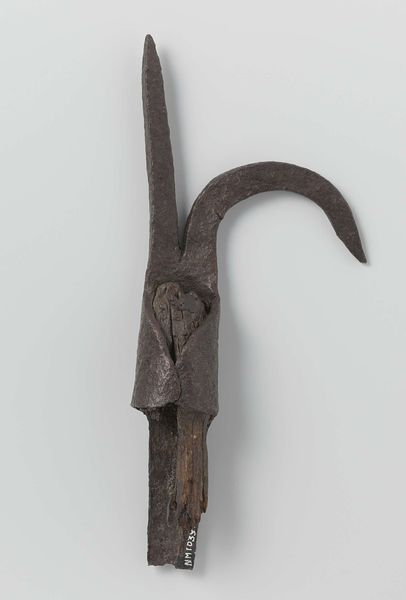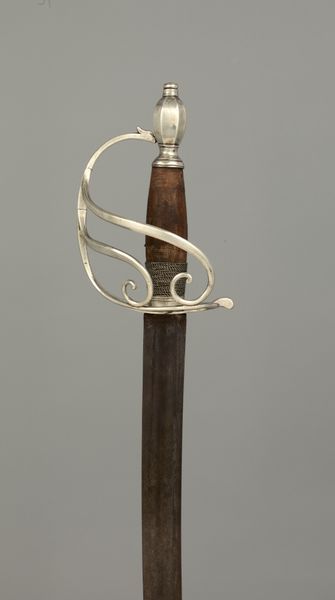
metal, sculpture
#
medieval
#
metal
#
form
#
geometric
#
sculpture
#
line
Dimensions: length 25.6 cm, width 22 cm, diameter 3.5 cm
Copyright: Rijks Museum: Open Domain
This rapier hilt, of unknown origin and date, is made of iron. It's a testament to the essential nature of materials and processes in shaping the past. The ironwork, forged by a skilled smith, speaks of a society where metalworking was both a craft and a necessity. Notice how the metal has been shaped into protective loops and bars. These aren't just decorative; they’re a cage designed to protect the wielder's hand. Swords like these were not mere weapons; they were symbols of status, tools of power, and reflections of the social order. The labor involved in creating such an object – from mining the ore to the final polish – represents a significant investment of time and skill. It reminds us that even the simplest object has a complex story of production and consumption behind it, and that the boundaries between art, craft, and industry are always shifting.
Comments
rijksmuseum about 2 years ago
⋮
Naturally, Barentsz’s ship and his crew were well armed. They had to be able to repel pirates, European rivals and potentially hostile Asian ships. On Nova Zembla the men used the weapons chiefly to defend themselves from aggressive polar bears.
Join the conversation
Join millions of artists and users on Artera today and experience the ultimate creative platform.













